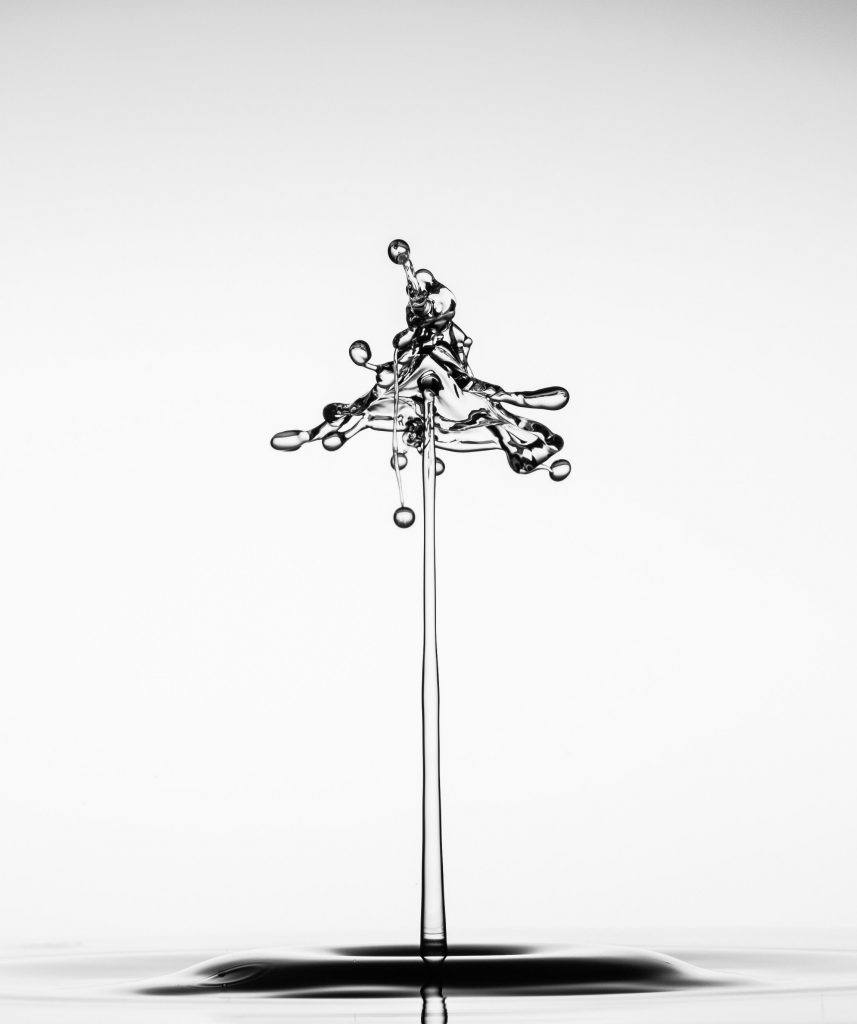
Water. Good old H2O. We not only need to drink it to survive, but our bodies are actually made up of about 60% water. Did you know that your brain and your heart are made up of about 73% water? Your lungs are about 83% water, your skin about 64% water, muscles and kidneys are 79% water. We are legitimately made mostly of water, without it, we would not even exist.
Knowing how vital it is to our survival, why are we so quick to waste it? Even more so, why do we not even think about the fact that we are wasting water?
The purpose of today’s blog is to open up a discussion about water and about not only how we waste in our daily activities, but also how it’s being wasted in terms of what we eat and what we purchase.
Let’s start simple, everyday activities that we do and how much water we use in doing those activities. Here we go!
A big one: taking a bath. A “full tub” typically requires on average 36 gallons/136 Liters of water (depending on the size of the bathtub of course).
A shower on the other hand: These days a typical shower requires 2 gallons/8 Liters of water per minute.
Teeth Brushing: Requires less than a gallon/less than 3 Liters per minute with today’s standard faucet.
Hand washing/face washing/shaving legs: Requires about 1 gallon/4 Liters of water total each time.
Dishwasher: Requires between 6 and 16 gallons/between 23 and 60 Liters of water per cycle.
Dishwashing by hand: Requires between 8 and 27 gallons/between 30 and 102 Liters of water (depending on how efficient you are)
Washer for Clothes: Newer models require about 25 gallons/95 Liters of water per cycle. Older models can require up to 40 gallons/151 Liters per cycle.
Toilet flush: On average requires 3 gallons/11 Liters of water per flush. Newer models average around 1.6 gallons/6 Liters of water per flush.
The average person uses about 80-100 gallons/302-378 Liters of water per day. Imagine if you have a house with 2 people living there. Imagine a household of 4. This is also not including children (who tend to unknowingly waste more water), and is an average number. Some households are much lower than that in their water usage, and some households are way above those numbers.
How can we reduce our water waste on a daily basis?
Limit the amount of baths that you take. I know how relaxing a bath can be, but think about how much water you are wasting by bathing 2 times a week.
When you shower, limit your shower to 2-3 minutes. When you are in the shower, maybe blasting your favorite tunes, singing into your shower-head microphone, performing your heart out like it’s the Grammys (trust me, I’ve been there, ha!), think about how much water is being wasted for every minute of that performance. My tip, pick a song you love before you shower, pump up the volume on that bad boy and sing your heart out in the shower for the 2-3 minute duration of that jam session. You will be clean and also, you won a Grammy…nothing bad about that!
Brushing your teeth…I cannot tell you how many times in my life that I have come across people who leave the water running while they brush their teeth. Recommended teeth brushing time is 2 minutes. If you leave the water running, you are wasting probably about 1.5 gallons/5.6 Liters of water, and you’re doing that twice a day.
The same goes for hand washing. Hand washing, when done properly, should be done for 30 seconds. Wet hands, lather with soap, scrub with soap for 30 seconds, rinse, dry. During the time that you are lathering up your hands with soap, does the water really need to be running?
Those are just a few tips to reduce how much water you waste in a day. But what about other aspects of our life? What about how we eat and what we buy? How does that affect our water footprint?
This part of the conversation could be talked about and discussed for hours on end. Today, I plan on just hitting the basics, to give you a general idea of just how much water we need to produce the things that we purchase, the things that we eat. In future blog posts, I will be going into more detail on specific aspects of this, as it is not only so important to think about and be aware of, but it’s also extremely interesting and not very well known.

Let’s start with milk. So many people drink cow’s milk, which is also a topic for another day. But in terms of production, and how much water it takes just to produce milk, the facts are pretty astounding.
Let’s say you buy 1 gallon/4 Liters of milk. You may think, “but I’m buying milk? So how is that wasting water? It’s milk.” True. It is milk. However think about how that milk is made. Obviously, we need cows. Just like humans, cows need water to survive. The average cow drinks about 30-50 gallons/113-189 Liters of water per day. Without a hefty water intake, they cannot produce milk at the levels that consumers are purchasing it. Milk itself is 87% water. So that 1 gallon/4 Liters of milk that you buy, well, it took between 1,000 and 2,000 gallons/between 3,785 and 7571 Liters of water to produce just that one gallon!
Okay, so that’s the basics of milk, a topic of which I have much more to say, but I will save that for another blog post. Let’s move on.
Dairy farms. Milk is not only something that people drink, but it is used to make butter, cheese, yogurt, etc. How much water does it take to run and operate a dairy farm? No, I am not talking about a small family owned farm here. I am talking about your, sadly, standard commercial dairy farm. We are going to keep it pretty simple here because again, this is just to give you an idea of water waste.
These commercial farms house around 130 cows on their property at one time. Now take what we learned before about how much water a cow drinks on average. One cow needs about 30-50 gallons/113-189 Liters of water per day. So for the sake of argument, let’s say 45 gallons/170 Liters of water per cow, per day. So a commercial farm with 130 cows uses 5,850 gallons/22,144 Liters of water per day just so their cows can drink enough to survive and produce enough milk to meet the demand. Let’s look at that over a year’s time. In one year’s time, that commercial farm is using 2,135,250 gallons/8,082,800 Liters of water per year. Let’s look at that on an even bigger scale. There are about 40,000 commercial dairy farms in the United States alone. This does not include more smaller scale farms or family owned farms, only the larger commercial dairy farms housing 130 cows each. Looking at our numbers from before, and adding that all together, per year in the US, commercial dairy farms are averaging 85,410,000,000 gallons/323,312,020,471 Liters of water per year! Again, keep in mind, this is only giving the cows what they need on a daily basis. This is excluding upkeep of the farm, the cow’s housing facilities, the watering of crops and fields that the cows graze from, etc. So these numbers are astronomically higher, which to me is absolutely insane!
The last thing I want to take a quick look at is farms raising cows for beef. To produce just one pound of beef, it requires about 1,910 gallons of water (or 15,944 liters per kilogram). Since we went more into detail about this in terms of milk production, I won’t take you through the whole thing again. But I think you can see the idea I am trying to get across.
The activities we do every single day greatly affect our water usage and water waste. Not only this, but the amount of water used purely to produce a gallon of milk or a pound of beef is catastrophic! You may be asking, “why is this so important?”

Our environment is seriously lacking resources. Did you know that “Animal agriculture makes a 40% greater contribution to global warming than all transportation in the world combined” and that it is the “number one cause of climate change?” Did you also know that over 70% of our freshwater is used for agriculture? This is so extreme. The demand for meat and dairy products is constantly growing. It grows as our population grows. The rate is extremely rapid and the amount of freshwater we have and the way that we waste it, well, at this rate we may not have the luxury of free freshwater 50 years from now.
So what can we do?
We will hit on this topic much more in future blog posts. However, just to briefly give you an idea of things you can do:
Don’t eat meat so often. No, you don’t have to go vegetarian or vegan. It would be great if you did, however it is understandable that people don’t want to give up things that they enjoy eating, and here at Spross, we are not trying to convert anyone to being vegan. We simply want to inform people about their impact on the environment, because it’s so much more massive than most people realize. So just eat meat less. You could try this: 2 days a week with meat, 3 days vegetarian, and 2 days vegan. Just by doing this, you are significantly decreasing your water footprint.
So, what else? Remember the tips from above? Be more aware of how much water you are using on a daily basis. Be conscious of it and make small changes to your daily life. Little changes go a super long way.
One last fact to close it out here:
The average daily water footprint of a meat-eater (based on someone who eats meat 4 times per week on average) is 4,000 gallons/15,141 liters.
The average daily water footprint of a vegetarian is 1,200 gallons/4,542 liters.
The average daily water footprint of a vegan is 300 gallons/1,135 liters.
It takes less water to produce one year of food for a vegan, than to produce one month’s food for a meat-eater.
Just some food for thought 😉
I hope you enjoyed today’s blog post, and again, we will be diving further into these topics in future blog posts. This is truly just the beginning!
Please let us know your thoughts in the comments below, and share this post with your friends and family. Thanks for all of your support!
Love,
Danielle and Wolfgang



